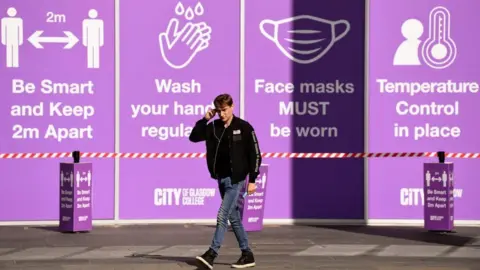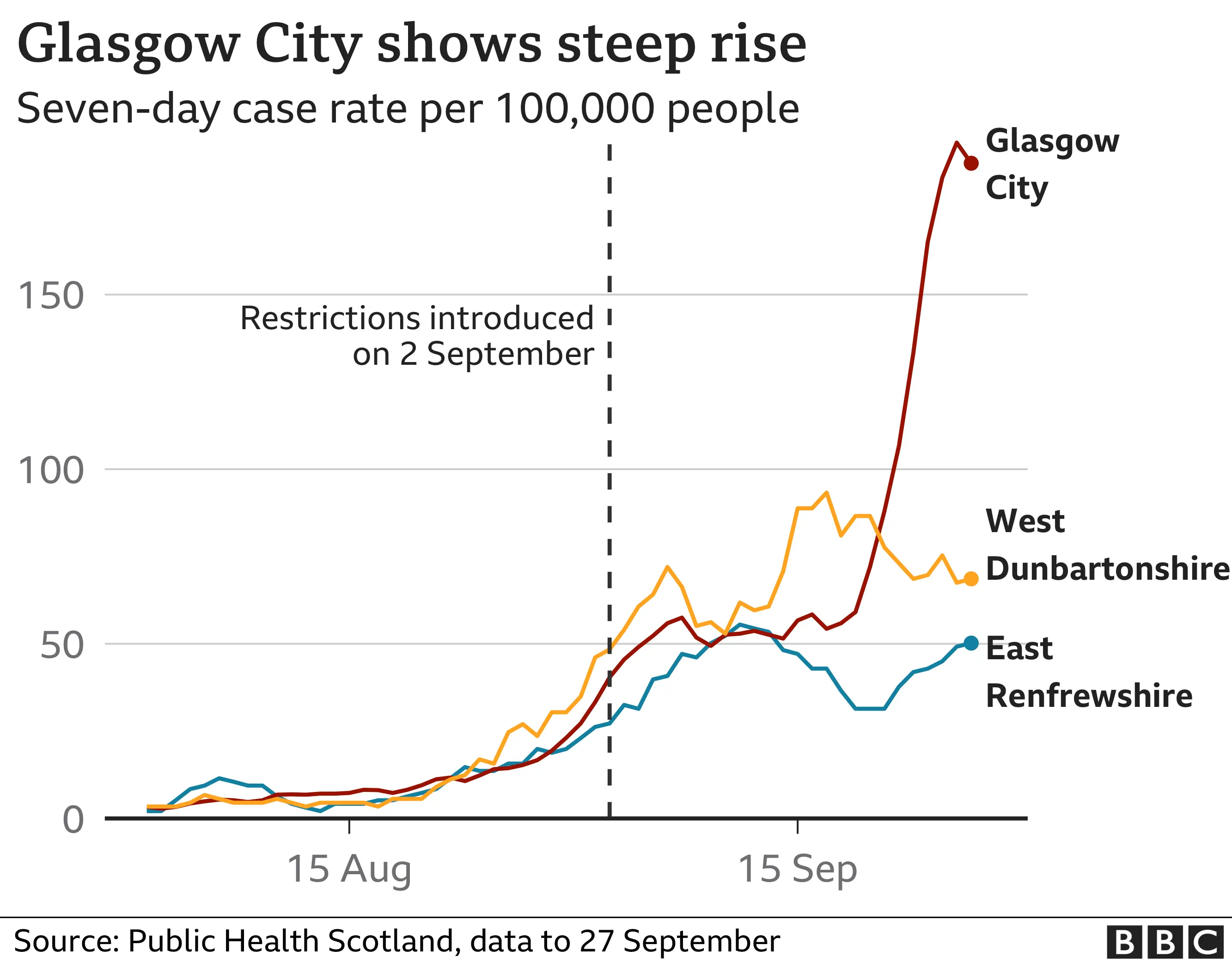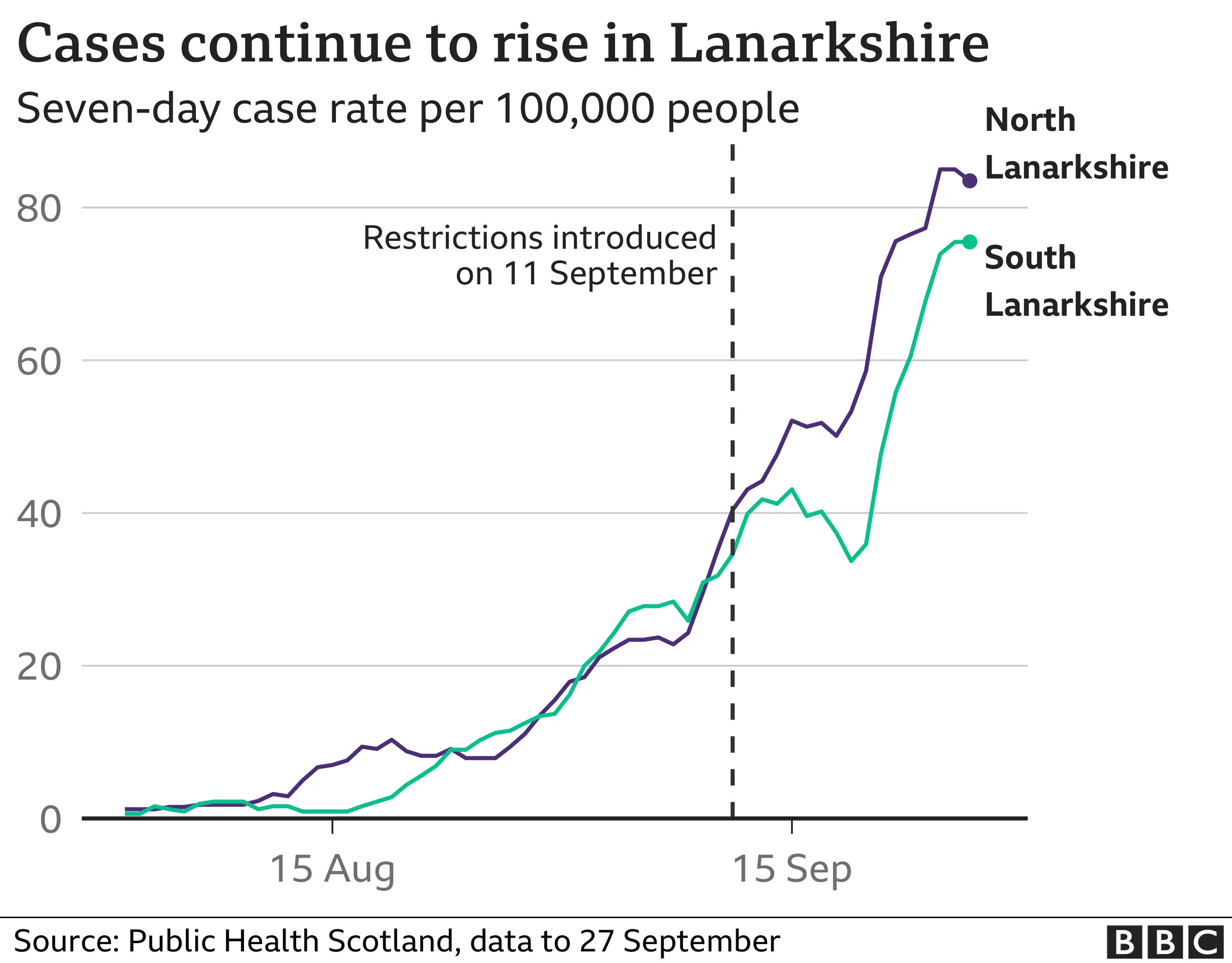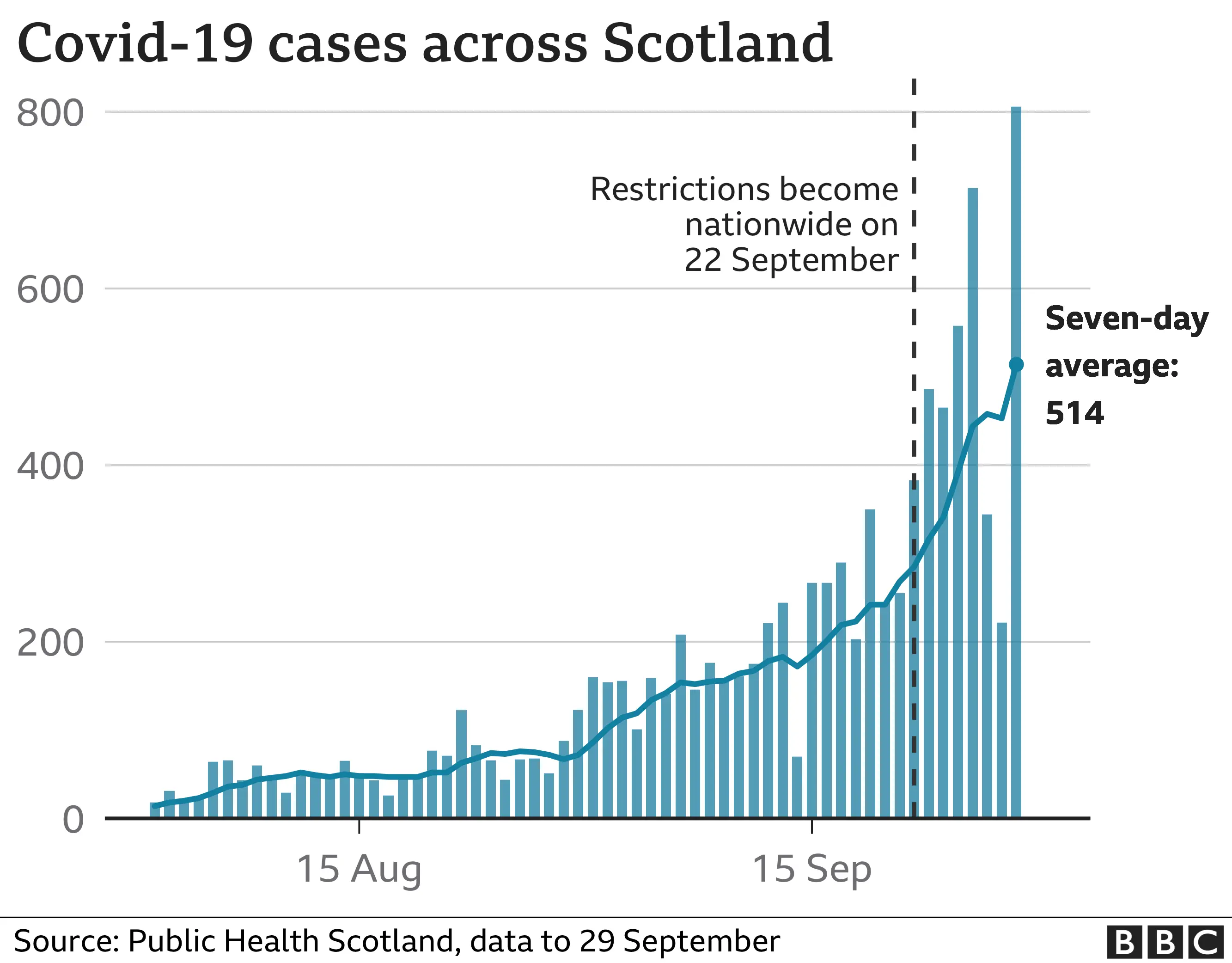Covid-19: Has the visits ban 'blunted' cases in west Scotland?
 Getty Images
Getty ImagesA ban on visiting other people's homes has now been in place for more than a week in Scotland.
The measure was one of the restrictions introduced by the Scottish government to slow the spread of Covid-19 infections, which have been surging in the country since the beginning of September.
It could be another two weeks before it's possible to see whether the ban reduces the number of new infections, but ministers believe the measure has already had an effect in the west of Scotland.
The visits ban was imposed on Glasgow, East Renfrewshire and West Dunbartonshire on 2 September and was eventually extended to four other local authorities.
First Minister Nicola Sturgeon says the restriction "blunted" the rise in cases in greater Glasgow, and her deputy John Swinney has talked about it "tempering" the increase.
Mr Swinney has also cited it as one of the reasons the ban was extended to the rest of the country, but exactly what sort of effect has it had?

2 September - Visits ban for Glasgow City, East Renfrewshire and West Dunbartonshire
This first chart shows the seven-day new case rates per 100,000 people for the first three council areas that were hit with the restriction.
The rate is calculated by adding up all the new positive cases over the last seven days, dividing it by the population of an area and then multiplying by 100,000.
 BBC
BBCThe rate of positive cases in Glasgow City and East Renfrewshire slows in the days following the introduction of the ban.
For a few days in mid-September, the rates in the two local authorities are almost identical, but then the lines part ways.
As infection rates in East Renfrewshire begin to fall, they rocket upwards in Glasgow as cases among students in shared accommodation multiply.
There is no publicly available data which shows what proportion of positive cases in Glasgow were students, though we do know that at least 172 have tested positive.
If the student figures were removed, the rise would not be so dramatic but it's likely the trend would still be upwards.
In West Dunbartonshire there's a different story. Here rates continued to rise after the restrictions were introduced - and at one point were the highest in Scotland - but they are now declining.

7 September - Visits ban extended to East Dunbartonshire and Renfrewshire
Just five days after the restrictions came in for three councils, the curbs were extended. At this stage about 1.1 million people were affected.
 BBC
BBCBoth East Dunbartonshire and Renfrewshire follow a similar trajectory.
In these two areas, infection rates actually appeared to be slowing before the restrictions were introduced.
This trends continues and then rates fall, before both areas see clear rises into the final week of September.

11 September - Visits ban further extended to North and South Lanarkshire
Approximately 1.75 million people faced the restriction when the two council areas in Lanarkshire were added to the existing five.
 BBC
BBCCase rates in North and South Lanarkshire went in opposite directions when restrictions were introduced here, rising in the north but declining in the south.
Infections then fell in North Lanarkshire briefly before they began to rise again in both areas.
This pattern is seen across all seven areas apart from West Dunbartonshire - there does appear to be some "blunting" of the increase, but cases are mainly on the rise again across greater Glasgow.
 BBC
BBCNational restrictions on households meeting have been in place for a week, but in the west of Scotland they have been living with tighter measures since the beginning of September.
"Optimistic but not complacent" is how NHS Greater Glasgow and Clyde's Director of Public Health describes the situation.
She says figures show the rate of increase in positive cases is slowing down, apart from in Glasgow city where they have been dealing with a significant cluster linked to student accommodation. But it is too soon to definitively claim the measures are working.
The data from there suggests 40% of transmission is still linked to household clusters. This is where people find it harder to stay apart. They share cutlery, plates, towels and spend longer periods in less well-ventilated spaces.
Wednesday's figures outline why the national approach is a very cautious one. No ruling out of a short, sharp circuit breaker if positive cases, hospital admissions and ultimately deaths continue to rise.

23 September - Visits ban goes nationwide
For a Scotland-wide perspective, this chart shows the number of daily infections from the beginning of August up to 29 September.
 BBC
BBCLooking at the seven-day average on this chart, the rate of new infections does appear to slow slightly in the first half of September, but the rise has begun to steepen in recent days.
 BBC
BBC- IMPACT: How is the pandemic affecting life in Scotland?
- CASES: Where are the latest cases in Scotland?
- QUIZ: How well do you know the Covid restrictions?
- BACK TO SCHOOL: Can a school insist on a Covid test?
- LOCKDOWN EASING: What changes next - and when?
 BBC
BBCSource for data: Public Health Scotland and Scottish government.
